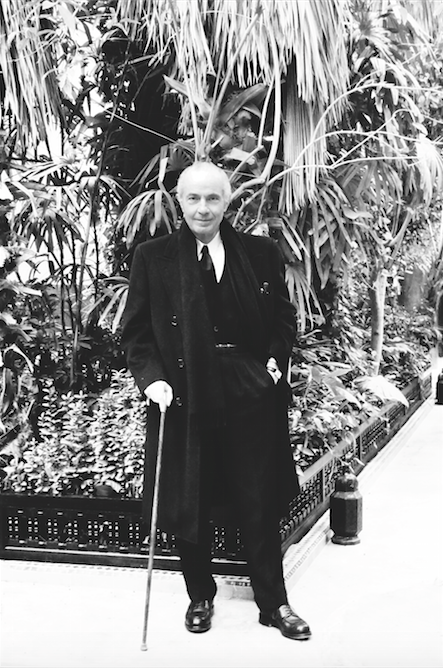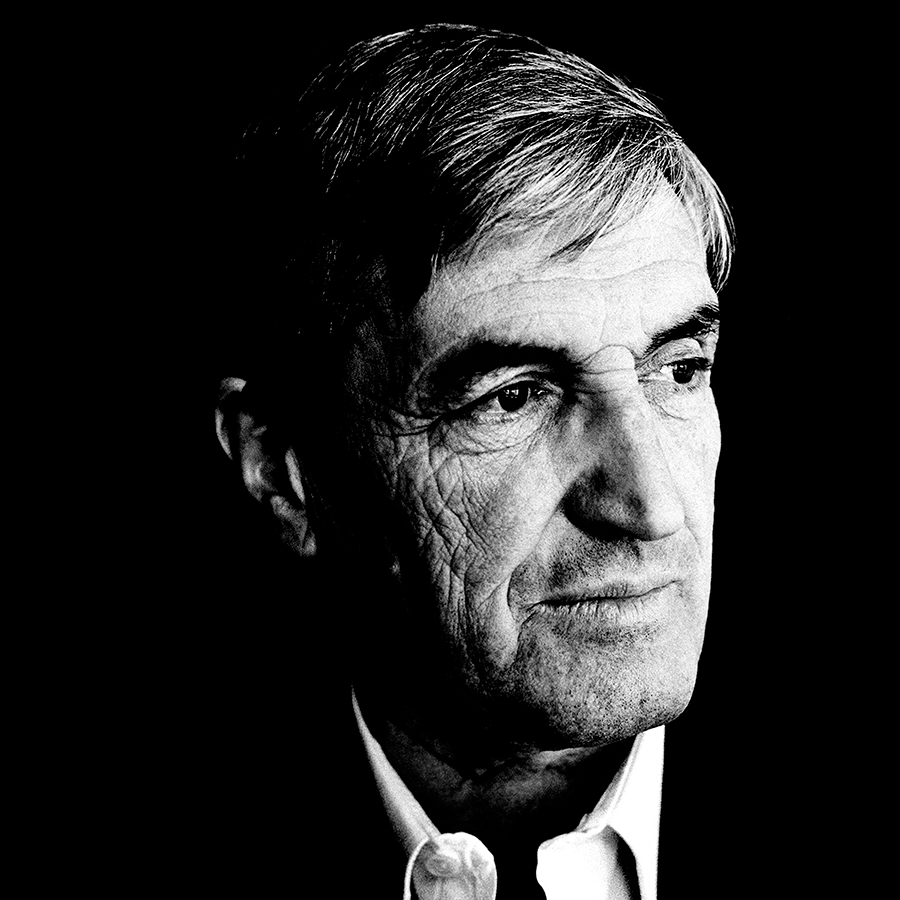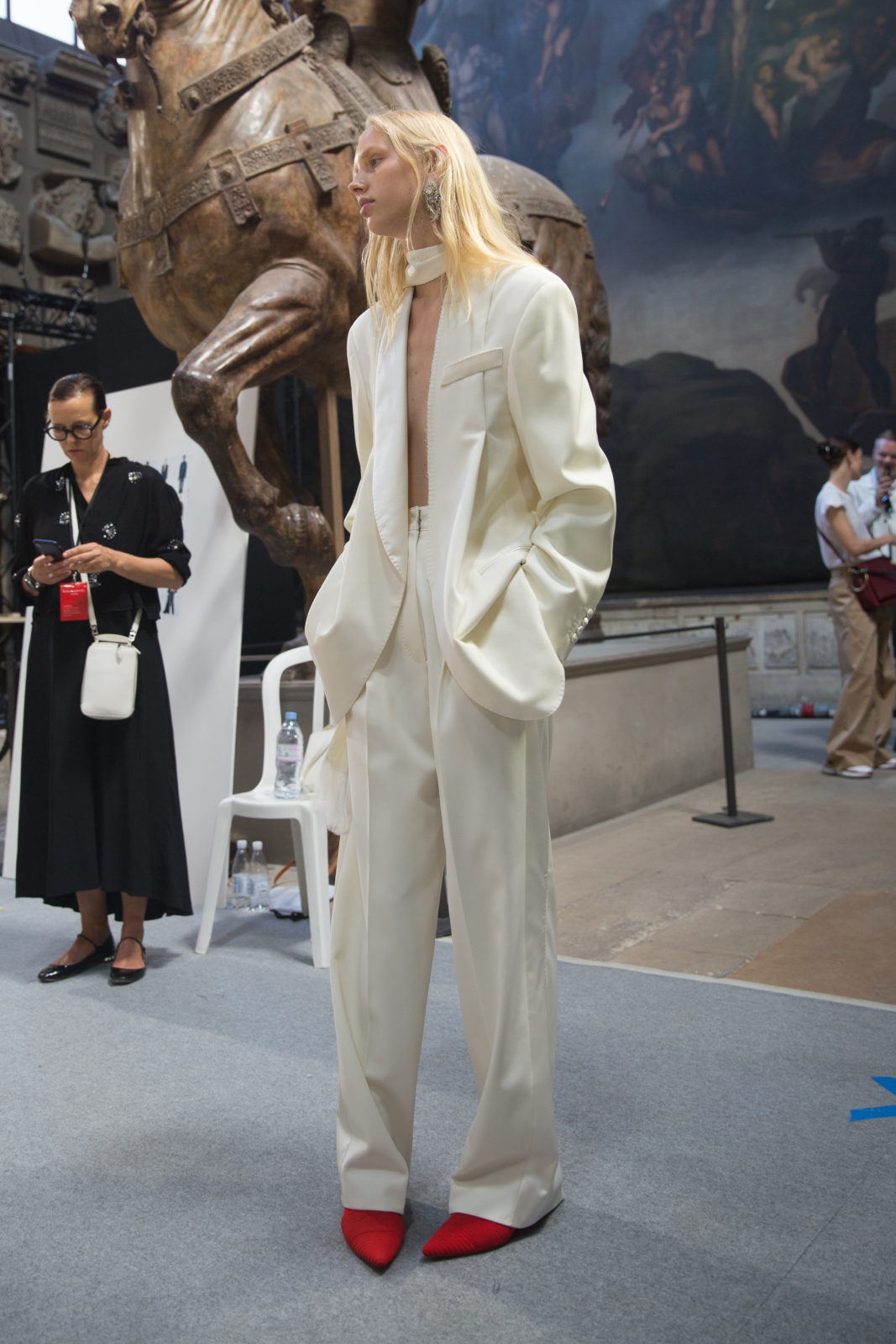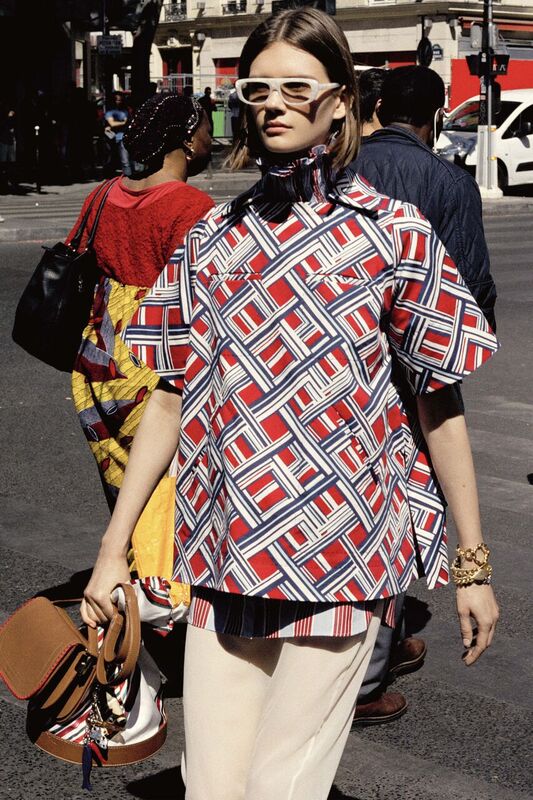
AN IRREVERENT POET OF WORDS AND SCENTS : SERGE LUTENS
By Crash redaction
Photo : Frank Perrin
AN IRREVERENT POET OF WORDS AND SCENTS, SERGE LUTENS IS A TALENTED ARTIST DRIVEN BY AN ARDENT AND MERCURIAL PASSION. HAIR STYLIST, MAKE-UP ARTIST, PHOTOGRAPHER, FILMMAKER AND PERFUMER, SERGE LUTENS EXPLORES HIS ART FROM EVERY ANGLE, DISPLAYING HIS SIGNATURE ELEGANCE AT EVERY TURN. HE INVITES CRASH TO STEP INTO ITS EXCEPTIONNAL UNIVERSE OVER AN INTIMATE CONVERSATION AT HIS MARRAKESH HOME.
We are absolutely blown away by the house. We were not expecting anything like this at all. It is a veritable labyrinth of perception and light.
For 43 years, I have worked tirelessly to take care of this home at my expense. Notice that when I speak about this abode, I do it in the same terms as a lover would refer to his betrothed. In no way does the house depart from tradition. It conceals a life still hesitating to make itself known, it delays the completion of an overture, and each time it is finished, I want to make it still more beautiful. But here its beauty is only a pretext. It acts as a seawall, it contains me, it confronts me with that which must be said but remains hushed. My silence speaks volumes, as muted as its response. However, every corner of every room gives me away. Framing a garden in which only the concerts of birds and the babbling of water disturb the steady buzz of bees, the house has grown beyond my own desires. Even now it continues to branch out! It hinders me from making a move.
In contrast with the way we generally conceive of creativity, it is not an active but a passive quality. It acts on us, it moves us, it magnifies our energy, it is not a choice. Every time I open a new wing in this house – an angel passes by – the prospect of future beauty generates a brand new energy that grows more intense with each passing day. In this place, beauty may be considered as an escape or a diversion. A headlong rush that keeps the eyes trained on nothing but the one single obsession. Other times, in order to justify this singular appetite, it starves me. In those moments, I think about all those who have accompanied me in their own way over the years, who have taken part in erecting this edifice of obsession. Then I know that after I have passed, this dwelling will take care of them. I will turn it into a Foundation. Sometimes I would like to grab my frayed bag (black, of course), which has seen me through so many years, and take flight. I would stuff it full of the books I have devoured and which, upon rereading, compel me to imitate their heroes, to borrow their gestures and habits, to make their vices my own.
In a sense, this house is like one of Balzac’s unknown masterpieces. It is endless, vertiginous. As soon as I arrived I thought of the American artist James Turrell, who purchased a volcano in the Arizona desert and has spent thirty years creating cavities of light in the rock by working exclusively with color: we see intense reds, but no beginning or end, as all perspective is lost. He is one of the most significant sensory artists. It is his own personal work, his thing, and it is not truly open to the public. His work is often exhibited in galleries and museums, but this is different: it is a work of meta-art that came from beyond. All the focus on colors, forms, the dichotomy of open and closed, though in an entirely different register, remind me of this house.
What we find fascinating about a work of art reflects something about us. Acquiring a volcano, refusing to be satisfied, digging tunnels, coloring them in red – a color that stagnates in shadows at depth: it is all so evocative! You said it about this house: there is no visible beginning or end. This titanic coitus culminates in obscurity. I would not be surprised if this place provided a surrogate for love at every turn. All the obsessed, unsatisfied people dig inward, towards a dead end. This house is a labyrinth, one gets lost inside. Did you notice the row of closets? Each one is empty, but that emptiness is full. I could mention Bluebeard, but to maintain my reputation, I will choose his inspiration, Gilles de Rais. There are innumerable storage areas in these halls. Some house piles of dishes, forks and knives one more precious than the last… It all adds up to the perfect setting to imagine a banquet, for someone who never allows his hunger to speak.
Do you think of this house as your work of art?
Absolutely not. In the same way as you, I am a visitor here. I seek out its defects. Each room was meticulously planned or, dare I say, chiseled. The craftsmanship is marvelous, made to inspire writing. And yet this beauty is forbidden to me. I can look and touch, but I can never fully enjoy it. Architect Peter Zumthor visited the house and examined every detail under the microscope. The man is a clairvoyant. In his words: No one lives here but this house is inhabited. Something breathes here. It comes as a surprise and grabs you by the throat.
In terms of inspiration, this home reminds me a lot of Gérard de Nerval: imagination, woman, the double, syncretism, schizophrenia, the other, and also an Orientalist form of poetry. However, that thought must have come to me from some mysterious place, because I do not see any direct connection.
In fact, “syncretic” is right: an amalgamated understanding of a whole, or a perpetually differentiated understanding that precedes perception or thought. And a fusion of cultural or religious elements, but even more than that “schizophrenic.” As a matter of principle, I refrain from referring to anyone who produces a work as “ill.” The double is apparent in everything in this house. It’s obvious. “I” splits in two, “I” is another. As the two combine, “I” is Narcissus. His wife is a mirror or the river, he inverts himself, or he drowns. I defend the cause of all neurotics. What distinguishes the schizophrenic is an inability to adapt to reality. They are waking dreamers, as Sartre said. A dream home made by a dreamer. Gérard de Nerval is a late Romantic. His writing is like magic. They said he walked a pet lobster on a leash in the Luxembourg Gardens.
How did it all begin?
Just as it does for anyone, with birth: mine happened in 1942. As an illegitimate child, for safety reasons – explained by Pétain’s adultery law – my mother and I were separated. That is undoubtedly the origin of MY wife. To me that means someone who takes responsibility for me. The other, in this case the true mother, is absence, which is also her presence. Between ages 10 and 12, every Saturday my friends and I were free to end the week as we pleased, to draw within a border of several centimeters, inspired by any source. Almost everyone traced geometrical forms in contrasting colors. Only I drew the beautiful ladies from the History of France, dressed in silk dresses and brocade. So in these few centimeters accorded to us, my pencil slid along the satin and damask of those weekend Queens. Only twice was my initiative rewarded, while the rest were ridiculed by the master. One small step separates school from the fashion world, and I took it early. In that case, the line between congratulations and criticism vanishes.
Since I experienced everything as an unconscious but recognized offense, as the offender I had no choice but to repair the situation, though, quite often, whether intentionally or not, the attempt to repair only made things worse. At age 14 and against my will, my father placed me in a hair salon. But my goal was a bald society! Then one thing led to another in rapid succession: 1962, Paris, the first magazine I contacted was Vogue. Just as I had imagined them, women flowed into my life like water from a mountain spring. From one magazine to the next: Jardin des Modes, Elle… Christian Dior contacted me to photograph their first make-up line. I knew nothing about it but simply forced the powder to do what I wanted. Success! But since it was not an end in itself, no more than Paris was, I distanced myself from my budding career as a make-up artist or, later, an “Image Maker.” A joke, right? I left it all to live on the other side of the planet with Shiseido. Day and night. Remember that what a fragrance is for you is not necessarily what it is for me. I see them as a bridge held out between images and words. Scents suggest, words specify. But if these are talents, they confer no merit. They are stronger than me.
How long have you lived in Morocco?
I came here for the first time in 1968, and returned many times afterwards. In 1974 I acquired a house in Marrakesh. It was in ruins, but I fell in love immediately.
What connection do you feel to all the images you have created?
It is same connection as I feel to this house. I see them through a stranger’s eyes, distinguish them, separate them into periods of doubt, confusion, even fear, which are all corollaries of violence.
You no longer produce images?
They are more obvious when translated into words. When Shiseido told me they wanted to change their image, my knees went weak and my legs gave out. Astasis, the doctors said. The emotion I felt during photo shoots was akin to a mystical experience. Through this exaltation in the double, the first person singular dissolved. Serge Lutens no longer existed. I was free. It all formed a whole: the music, the girl, and myself were united. But in exchange, the imagined girl disappeared over the following days, I would lose my bearings, and sink into depression.
You have worked with Guy Bourdin and other great photographers…
With almost all of them. Guy always acted naïve. His power of seduction came from there. He was always nasally but his Art consisted in using a model in the most complicated or even humiliating way possible. He was a flagrant misogynist. Avedon, always the showman, maintained a star system. He surrounded himself with talent. Everyone clapped for each other. It was very motivating, very American… It was the complete opposite of Irving Penn’s world where the photographer assumed a solemn attitude, while the models had to smile or laugh in an icy ambience without any music. A countercurrent, in fact. Was he provoking a conflict between being and seeming? All that remains of that time are fleeting memories. I was fortunate to experience a less stern era in which the photographer’s law was determined by the exacting eye of the fashion designer. Does that imply respect?
Do you ever miss the act of creating images?
I did at first. Stopping was a way of declaring a collapse. But through perfume, words picked up the slack. They can better express what images fix in place.
I think the photographic image is one step. What you do with scents, combinations, writing, these completely abstract novellas offer you an enormous freedom, a sense of fullness. An image is something else; once it is seen it becomes somewhat deceptive or repetitive. On the contrary, scents, literature, the ambience of this house all form something complete, something that has much more mystery and amplitude.
Your question is my answer.
Each of your perfumes makes me think of a novella. You are like the Mallarmé of fragrances. How do you explain that literary dimension, the verbal relationship you have to perfume?
Perfume is made up of essences. It is a true partner, it is organic, alive, it moves. It influences more than it fixes in place. But it does not offer any means of escape. Like hands, nostrils have their own memory.
What is truly interesting is that you give your audience stories that they can make their own.
I only evoke my own story. The Koran grants us 42 faces, each one our own, right? We are unique, but within the invisible dictatorship, we multiply each other infinitely.
Interview by Armelle Leturcq and Frank Perrin.









